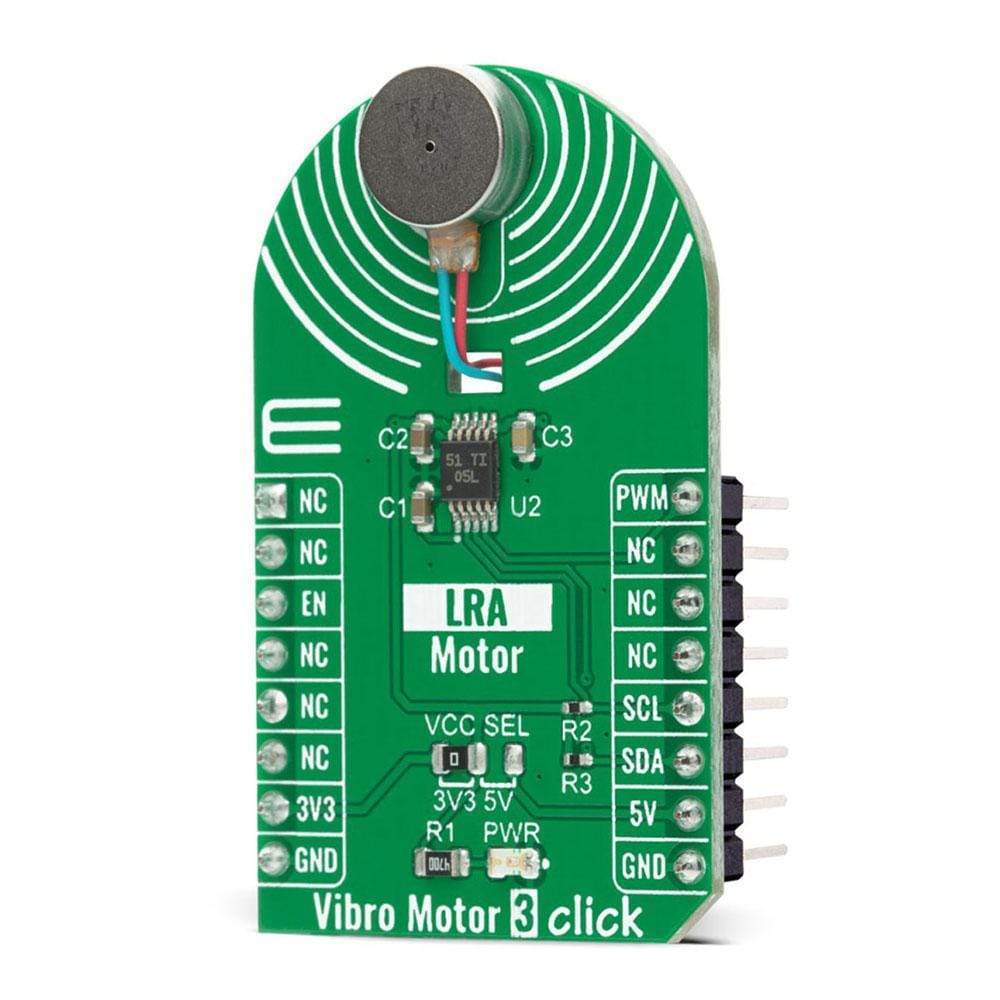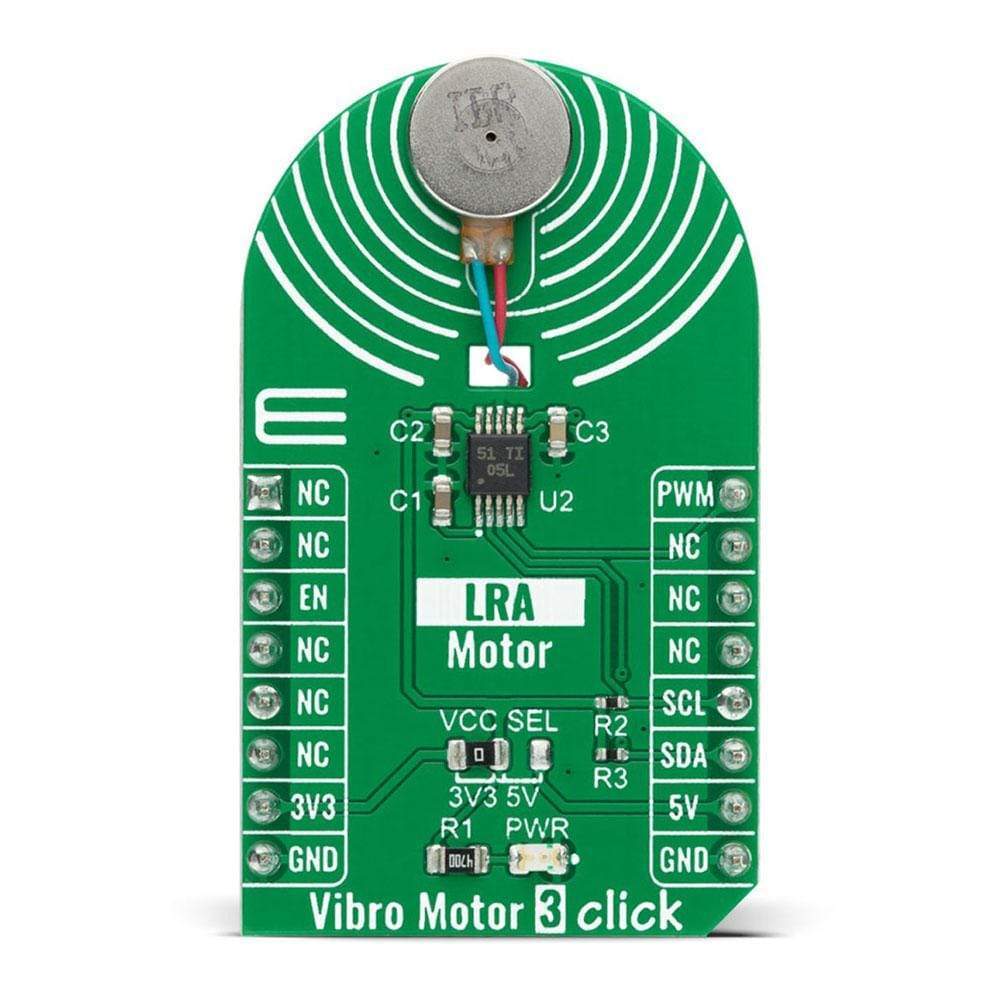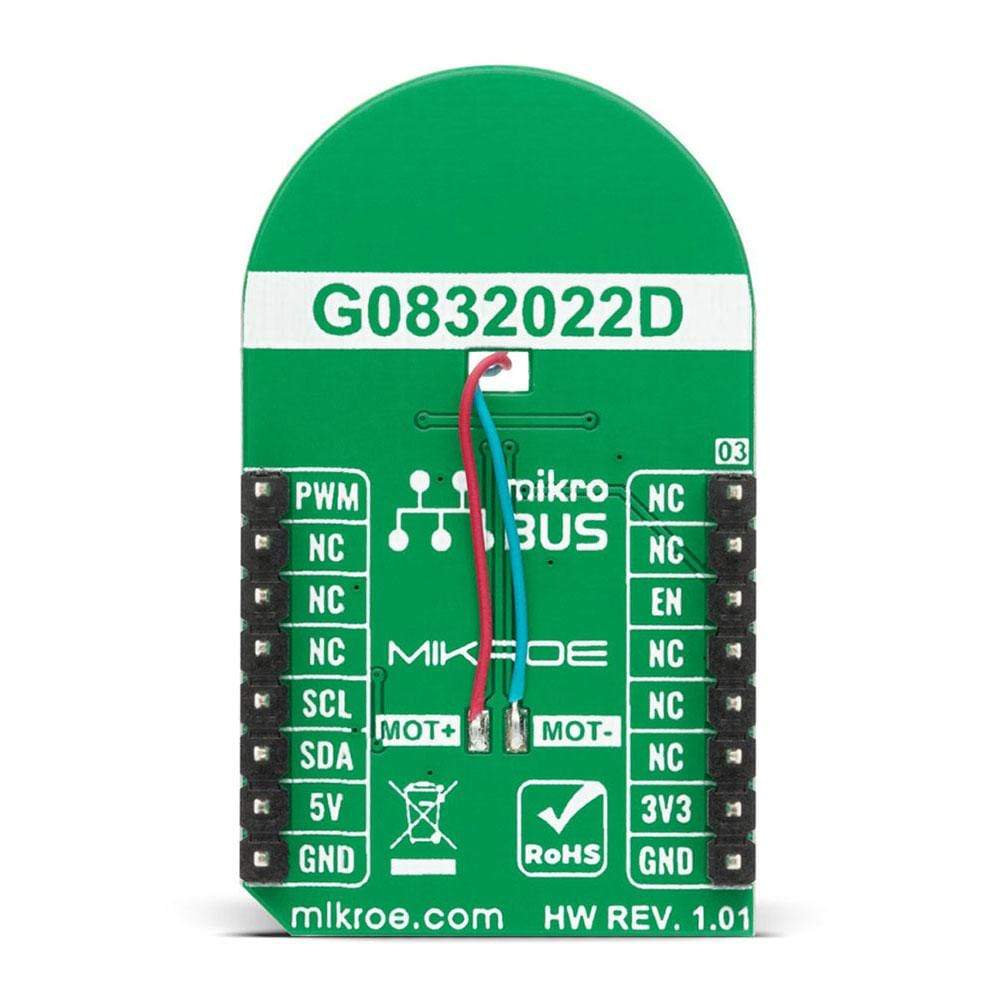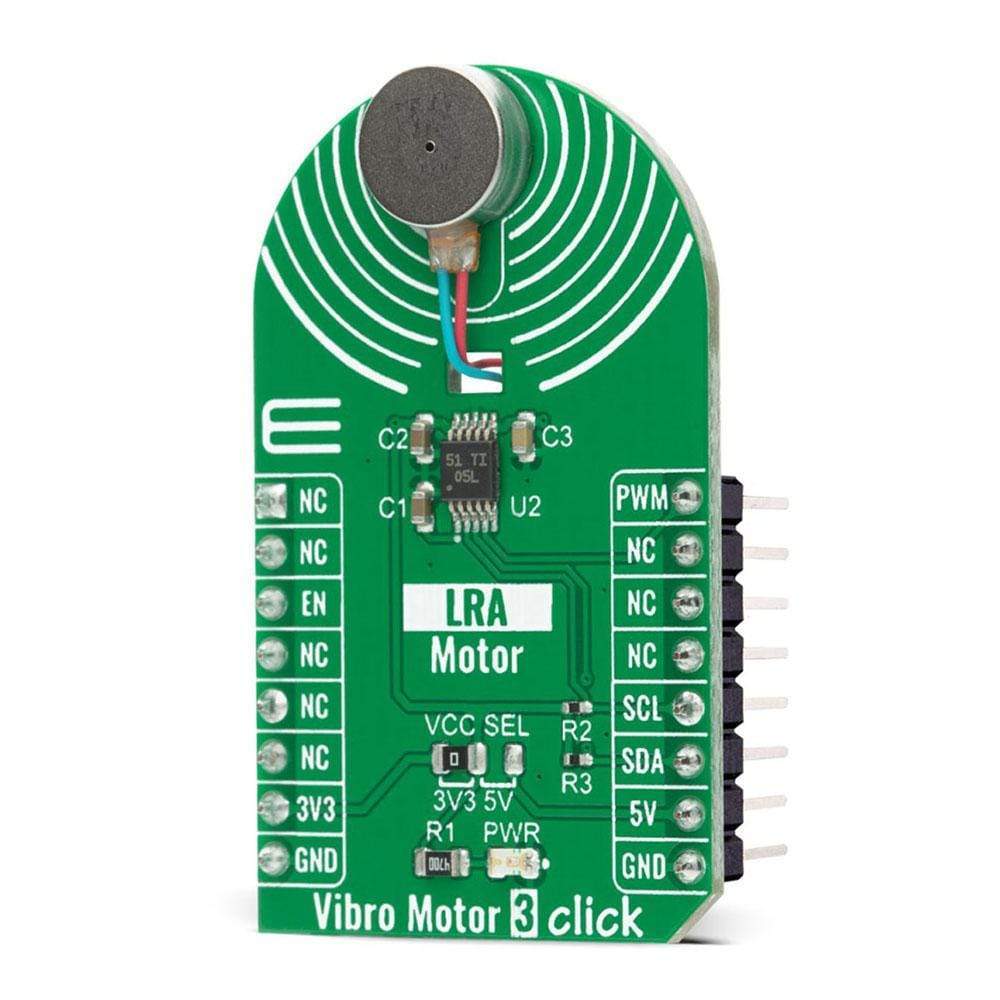
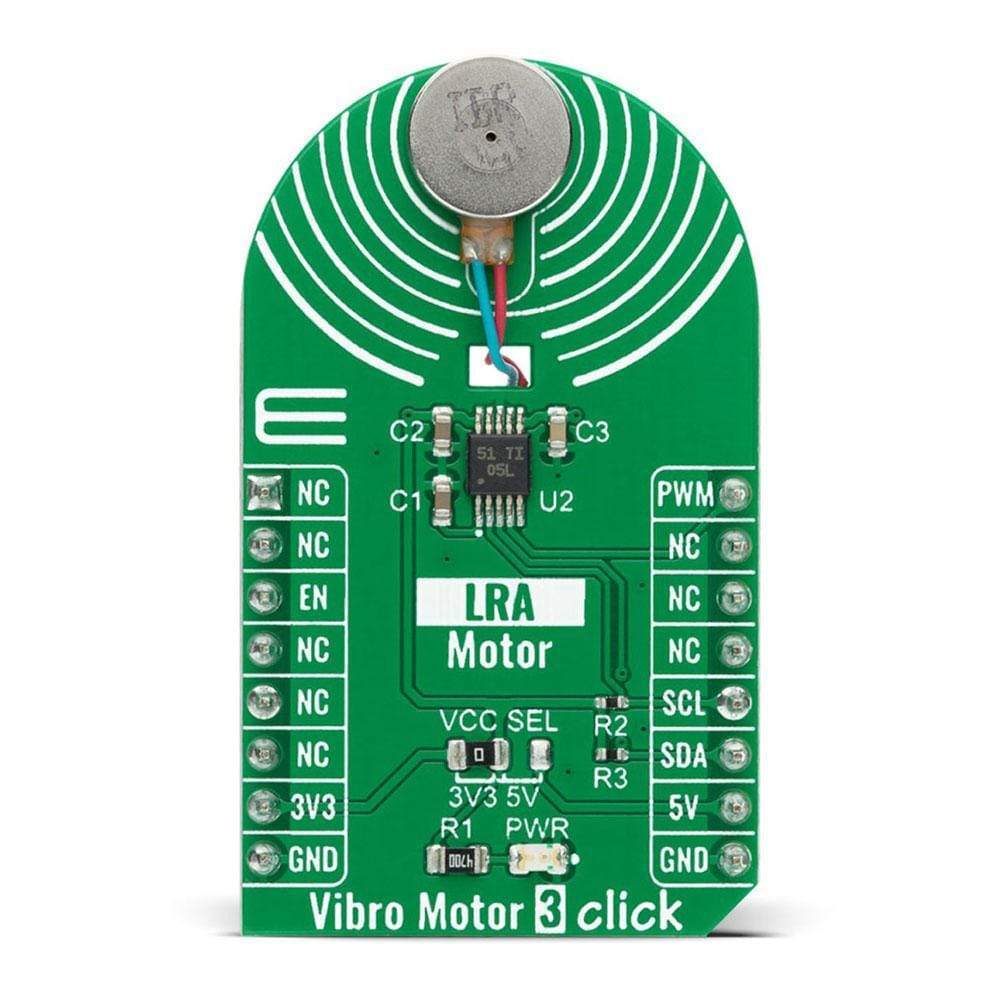
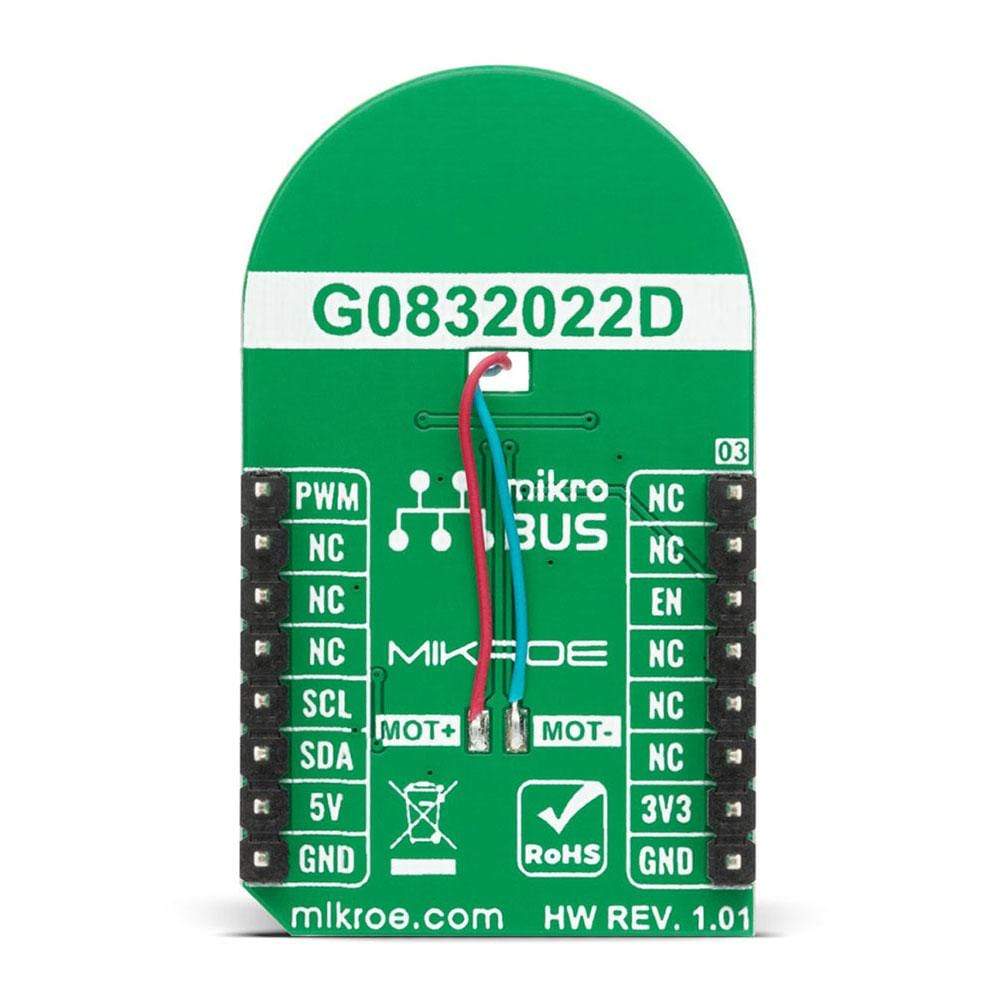
Overview
The Vibro Motor 3 Click Board™ is a compact add-on board that makes an ideal solution for adding simple haptic feedback in any design. This board features the G0832022D, a coin-sized linear resonant actuator (LRA) that generates vibration/haptic feedback in the Z plane, perpendicular to the motor's surface from Jinlong Machinery & Electronics, Inc. Driven by a flexible Haptic/Vibra driver the DRV2605, the G0832022D vibrates in the Z-axis, which is perpendicular to the face of the vibration motor. It draws only 19mA at 0.6V while producing a G force of 0.55 GRMS, making it ideal for battery-powered wearables. This Click Board™ makes an excellent choice for devices with limited battery capacity and for users where crisp haptic feedback and low power consumption are required.
Vibro Motor 3 Click is supported by a mikroSDK compliant library, which includes functions that simplify software development. This Click Board™ comes as a fully tested product, ready to be used on a system equipped with the mikroBUS™ socket.
Downloads
Le Vibro Motor 3 Click Board™ est une carte complémentaire compacte qui constitue une solution idéale pour ajouter un retour haptique simple dans n'importe quelle conception. Cette carte comprend le G0832022D, un actionneur résonant linéaire (LRA) de la taille d'une pièce de monnaie qui génère des vibrations/retours haptiques dans le plan Z, perpendiculaire à la surface du moteur de Jinlong Machinery & Electronics, Inc. Entraîné par un pilote haptique/vibratoire flexible le DRV2605, le G0832022D vibre dans l'axe Z, qui est perpendiculaire à la face du moteur de vibration. Il ne consomme que 19 mA à 0,6 V tout en produisant une force G de 0,55 GRMS, ce qui le rend idéal pour les appareils portables alimentés par batterie. Ce Click Board™ constitue un excellent choix pour les appareils avec une capacité de batterie limitée et pour les utilisateurs qui ont besoin d'un retour haptique net et d'une faible consommation d'énergie.
Le Vibro Motor 3 Click est pris en charge par une bibliothèque compatible mikroSDK, qui comprend des fonctions qui simplifient le développement logiciel. Cette Click Board™ est un produit entièrement testé, prêt à être utilisé sur un système équipé du socket mikroBUS™.
| General Information | |
|---|---|
Part Number (SKU) |
MIKROE-4356
|
Manufacturer |
|
| Physical and Mechanical | |
Weight |
0.028 kg
|
| Other | |
Country of Origin |
|
HS Code Customs Tariff code
|
|
EAN |
8606027381140
|
Warranty |
|
Frequently Asked Questions
Have a Question?
Be the first to ask a question about this.

